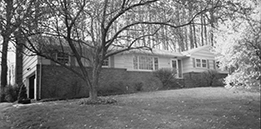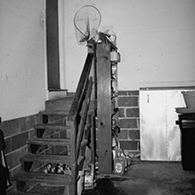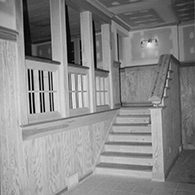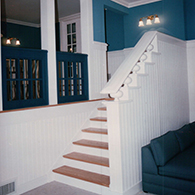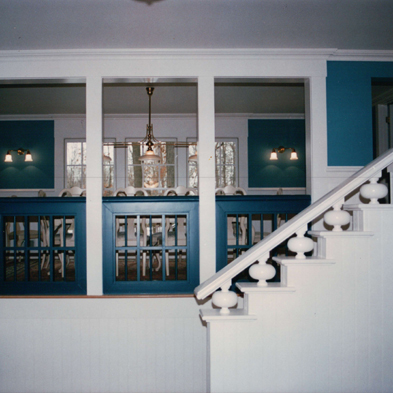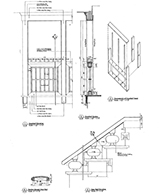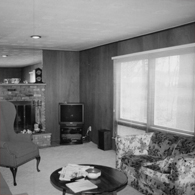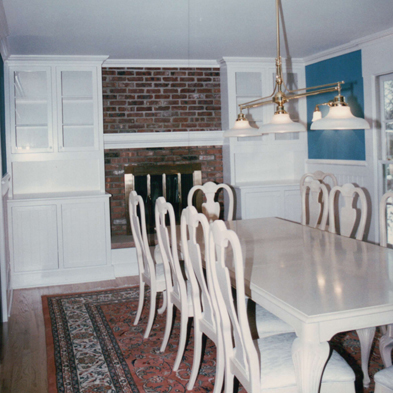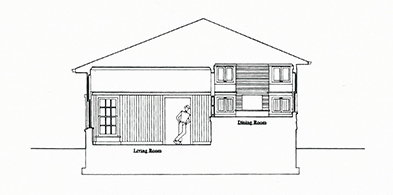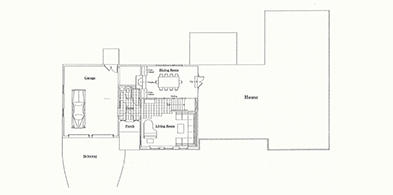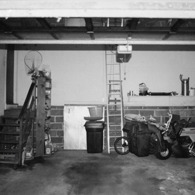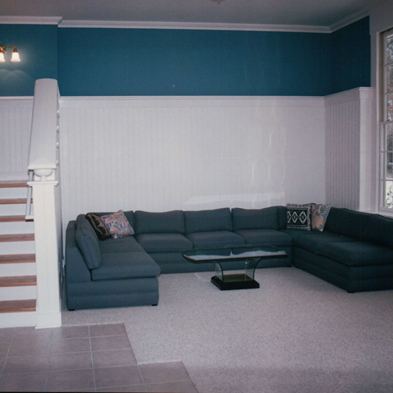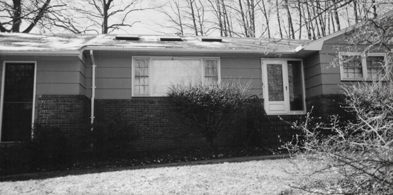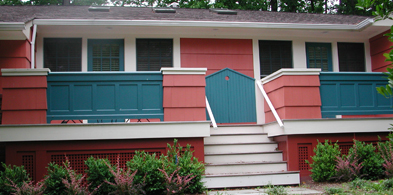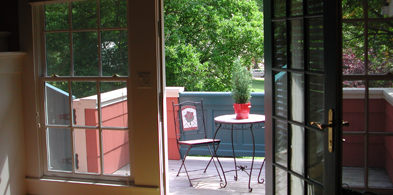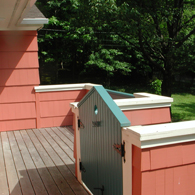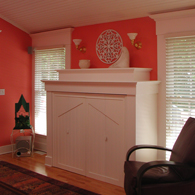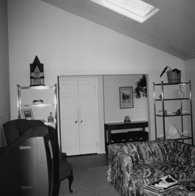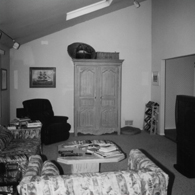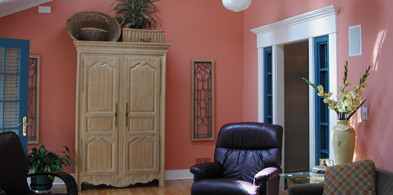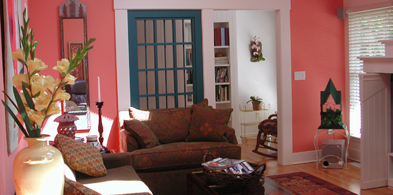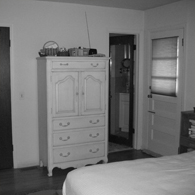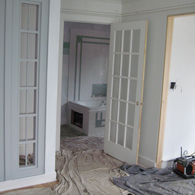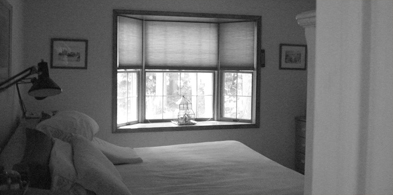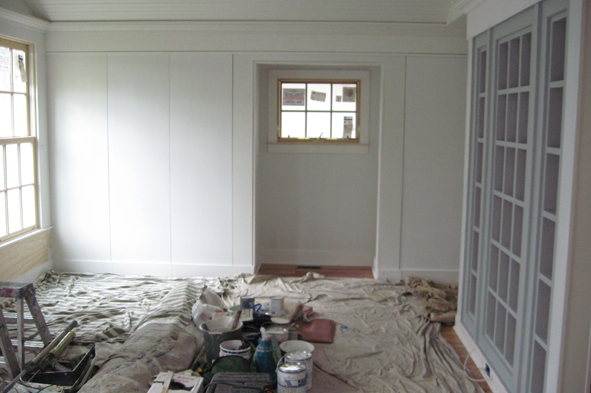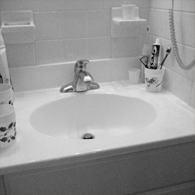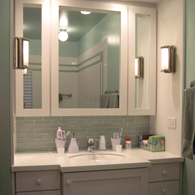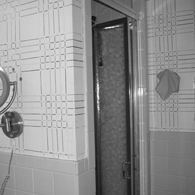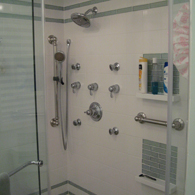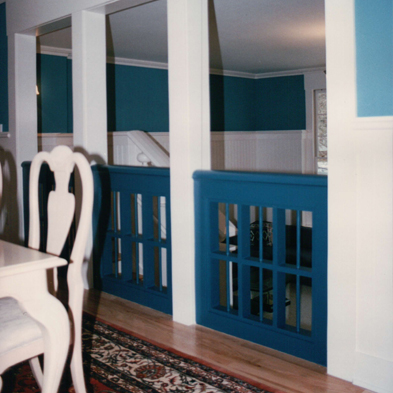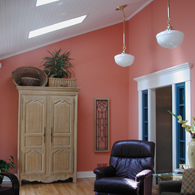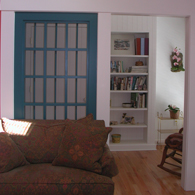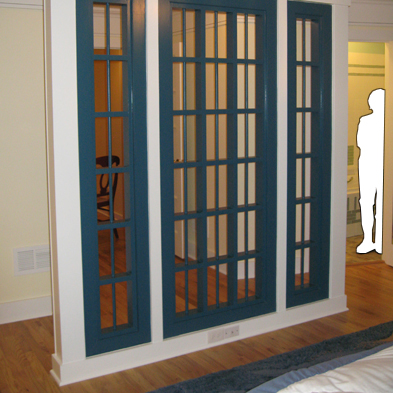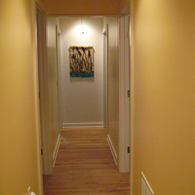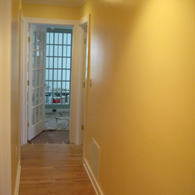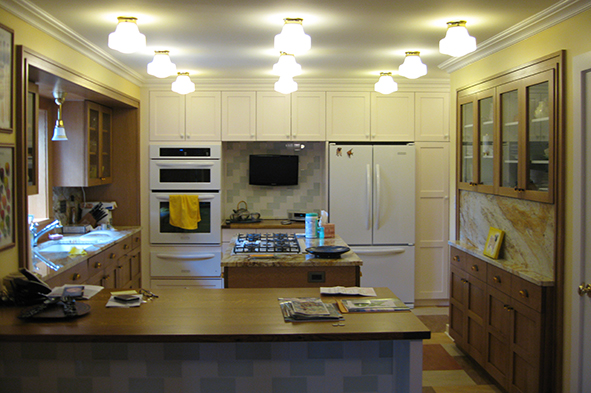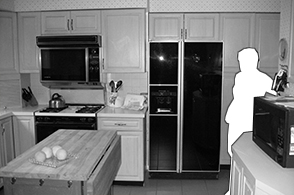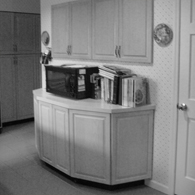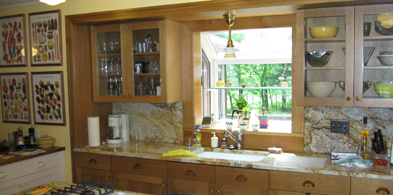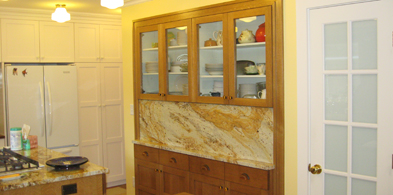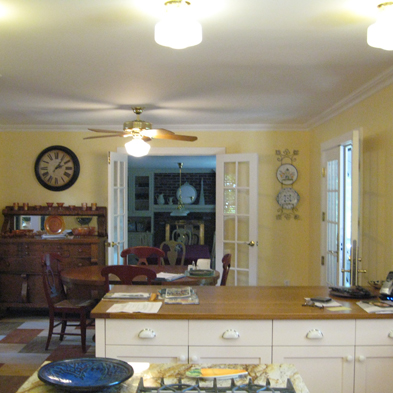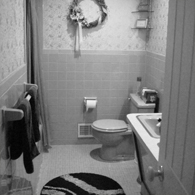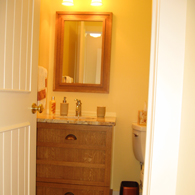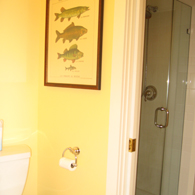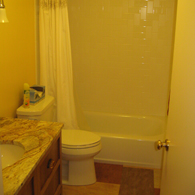Focus |Whole House
Ultimate Conversion
With a consistent approach,
a whole house makeover
can be done well
in stages.
This family is living in their garage and, at one time, they took baths in their kitchen, figuratively speaking. So goes the story of switching and swapping and adding and subtracting rooms during a whole-house makeover that took place in four stages over twenty years.
Of any, this project speaks to the changing needs of a family over time while speaking volumes about pacing home improvement projects in order to avoid renovator’s burnout. Although the project’s name originally referred to my initial work here: the 180 degree turnaround of serviceable garage into snug living room, it eventually came to refer to a stem-to-stern makeover.
In order to convert the garage into a living room, I designed a new wing for a garage, entry foyer and powder room. My suggestion to forget about room names freed our minds to convert the family room into a dining room and reassign the living room to become a family room.
Later, a project I had proposed as part of a master plan came to be as a new deck across the front of the house that eliminated the former front stoop. As part of that second stage, I added architectural detail to the family room that occupied the space of the former living room.
I was pleasantly surprised when, as stage three, the homeowners asked me to renovate the already renovated kitchen (see Sugar and Spice) along with a pair of ill-sized bathrooms. The allocation of a bathtub alcove to the kitchen allowed me to design better functioning and prettier rooms.
Finally, during stage four I combined two bedrooms to create a master suite with bigger bathroom and I improved the guest bedroom.
Years later, not a single room in this house remains unchanged.

